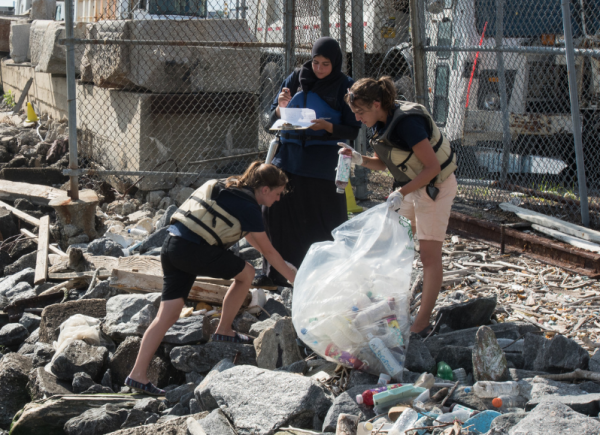Plastic pollution is a global concern, posing challenges to organisms and water quality worldwide. For the last seven years, Hudson River Park has collected and categorized macroplastics — plastics larger than 1 inch — from the Park’s Gansevoort Peninsula shoreline in partnership with Brooklyn College and the National Oceanic and Atmospheric Administration (NOAA). Data collected during this study is entered into the NOAA Marine Debris Tracker and contributes to the greater understanding of the impacts of plastic pollution on our local waterways.
Marine Debris Study
Hudson River Park uses the NOAA marine debris protocol to collect and monitor debris found on the Park’s soft shoreline at the Gansevoort Peninsula. Since 2015, the Park has removed 2,700 pounds of marine debris from its shorelines including over 30,000 pieces of plastics with the help of 200 community volunteers. This work removes trash from our shoreline but also provides information that helps scientists examine the distribution, concentration and variability of debris in the Park’s waters, which can help identify sources and severity.
Get Involved! Schedule a Shoreline Cleanup
Hudson River Park’s River Project invites organized groups (ages 18+) to support the marine debris study marine debris study through an engaging and informative volunteer day in the Park: Volunteers count, categorize and remove marine debris from our shoreline alongside dedicated River Project scientists. Join us to help improve conditions in our local waterways, protect Hudson River Park’s Estuarine Sanctuary and build a community of dedicated environmental stewards!
To learn more and schedule a cleanup, email [email protected].
